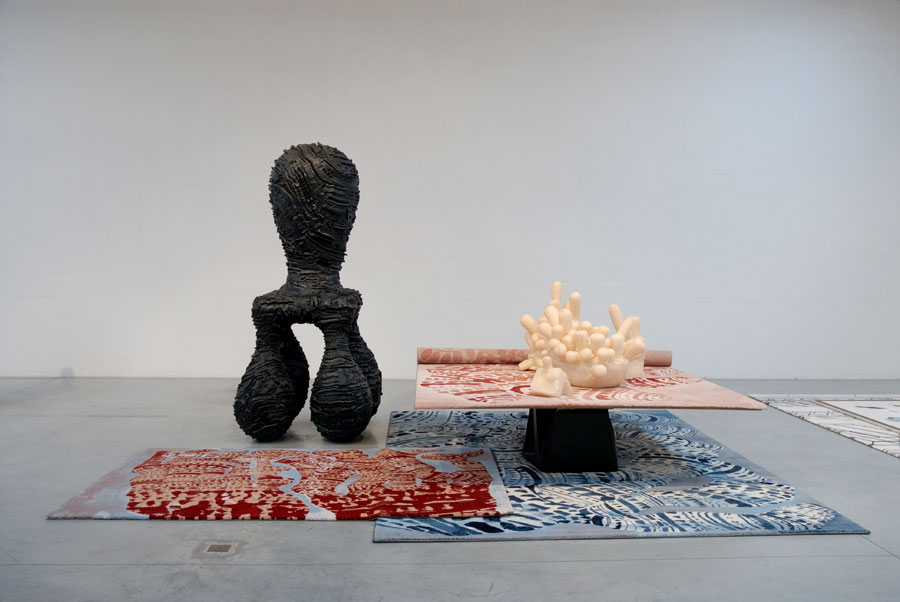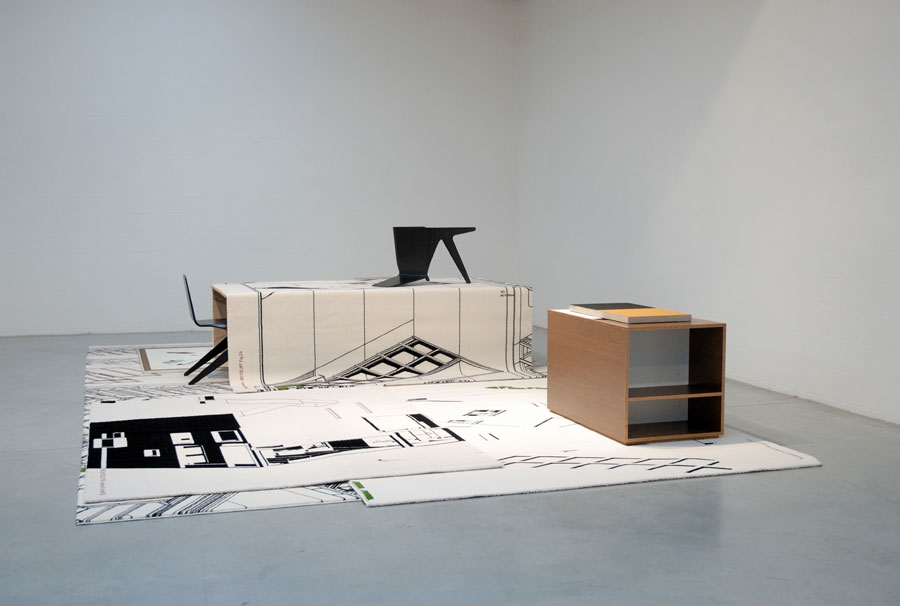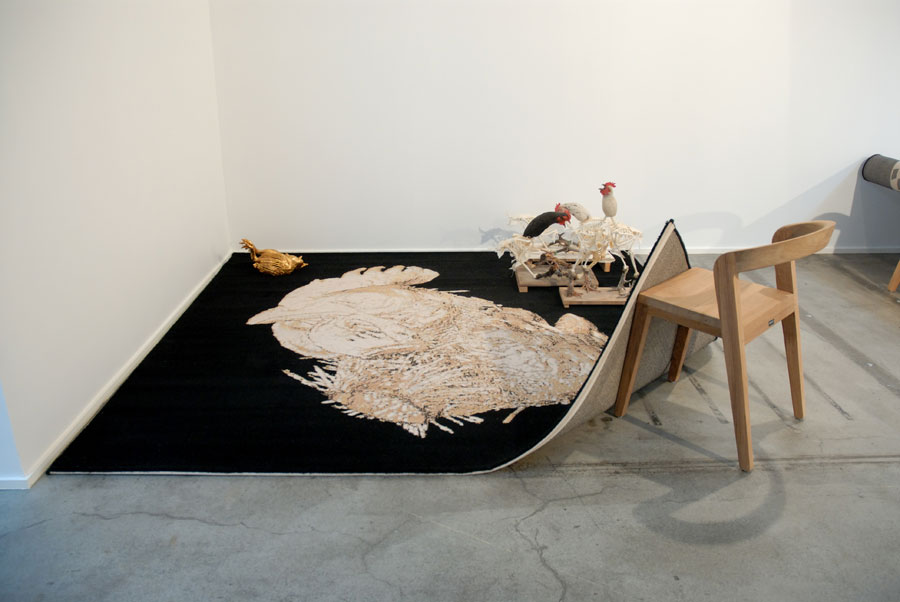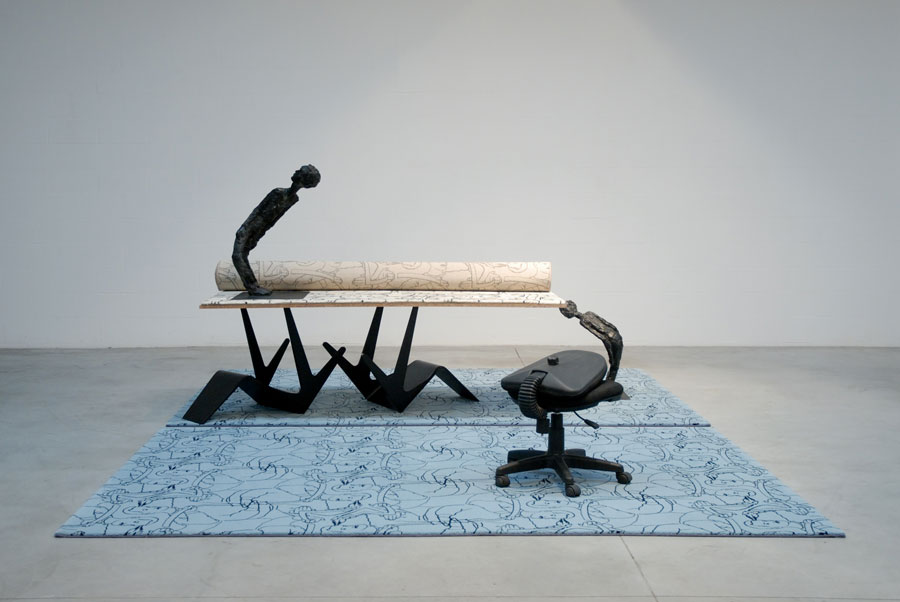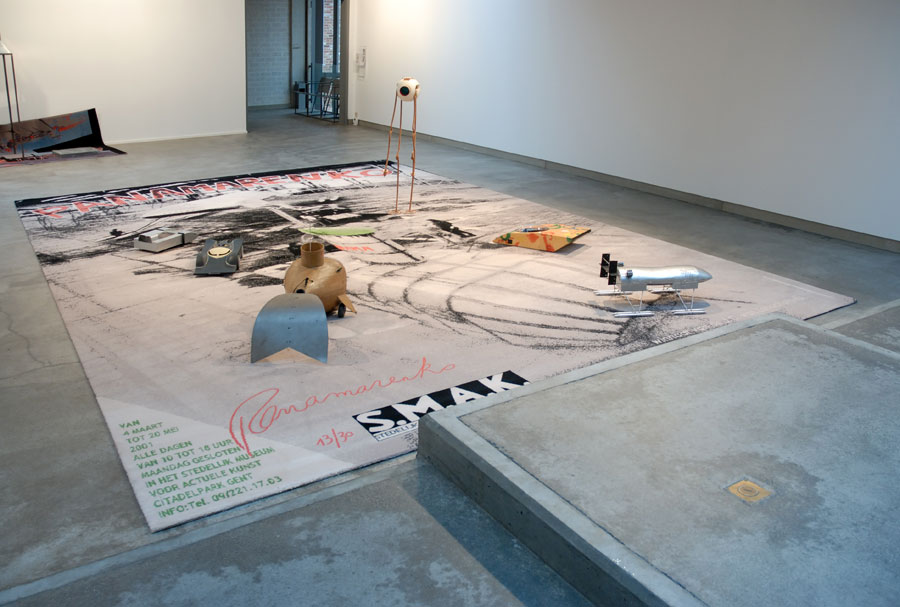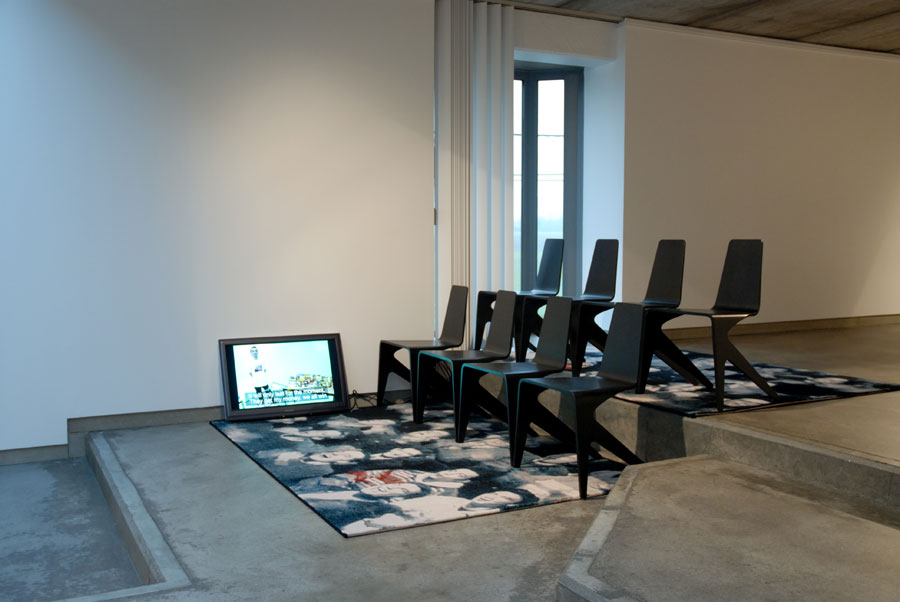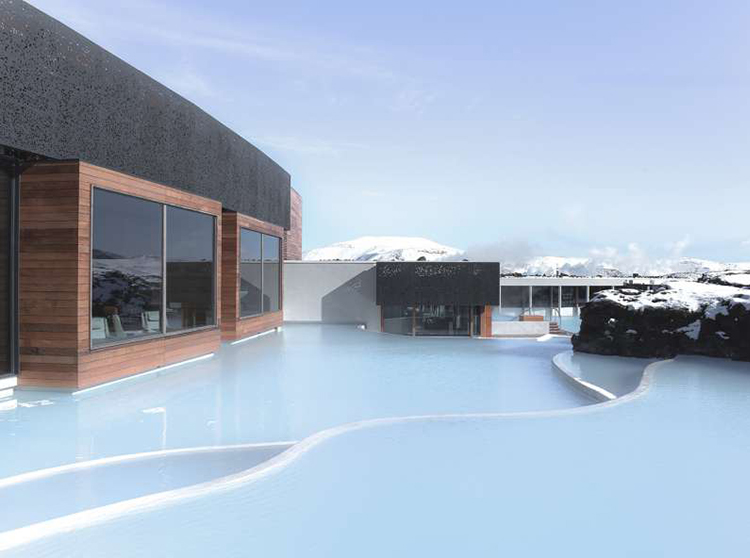Art of the Loom
32 Tapestries Woven on the Looms of Mark Deweer’s Factory
Mark Deweer, founder of both DEWEER gallery and a carpet factory, merged the two passions that defined his life and created ‘Art of the Loom’, a stunning collection of 32 exclusive tapestries made by reputed artists from Belgium and abroad. Each artist really made something special out of it, and the result is a collection that challenges our views on the crossings between contemporary art and design. Technically, Mark Deweer had to go all the way to turn the wishes of the artists into carpet. Jan De Cock wanted a non-existing kind of white (and got it), Matthieu Laurette needed noise in his image, which is normally just what you want to avoid in a carpet design (but he got it), and Panamarenko decided that the best thing he could ask for was to turn the poster of his seminal show at SMAK to be turned into a six by four meter carpet (and Mark did it).
The concept of this show, however, aims at more than just the display of the entire collection. First of all, the carpets are shown in relationship with works of art by all artists of the ‘Art of the Loom’ project and even by others. The interplay of works and tapestries tells us a story about the gallery and the special context in which it was developed. Several artists have reacted on the gallery’s typical atmosphere - productional and free at once – and its situation as a satellite of the carpetfactory, by making works that were bigger, more material, more complex, more daring, or in one word just different. Traces of that mentality can be found in Tony Cragg’s experimental works, Matthieu Laurette’s installation Plight2, some works Stefaan Dheedene made for his shows here, and even in a series of photographs by Sergey Bratkov. All these works could hardly have been made elsewhere, and that’s one of the reasons they are in this show.
Second, the formal concept of this exhibition is quite experimental. When creating these carpets the artists were confronted with limitations and possibilities very different than the ones they were used to deal with in their daily practice. In the same way, exhibiting the carpets demanded a format beyond the usual. We chose to accentuate this difference instead of trying to compensate it. This way the appearance of the Art of the Loom carpets is kept in a bizarre, fascinating balance between a work of art and an object for daily use.
The show consists of 15 more or less autonomous installations, which look like exercises, improvised stacks, or proposals. Nothing was physically fixed; the works and the carpets have been assembled into temporary constructions. For example, we used leftovers from the vast amount of fibrewood plates from the closed down factory, where they used to serve as boards in the racks in which carpets were stocked. These plates were not sawn to measure; they were simply carried from the factory hall to the exhibition halls, where they got a new but very much related function.
Another feature of the show, which is related to all of this, is the use of chairs as a form of physical support instead of the usual socles. We do not have socles at home, but we do have chairs. Two models of chairs, the ‘Play’ and the ‘Mosquito’ by Belgian designers Alain Berteau and Michael Bihain respectively, are used in all thinkable ways. A total number of around 30 of them can be found throughout the show, laying or standing. Both models were produced by the Belgian label ‘Wildspirit’.
With Stephan Balkenhol, Sergey Bratkov, Tony Cragg, Jan De Cock, Stefaan Dheedene, Jan Fabre, Günther Förg, Ilya & Emilia Kabakov, Thomas Lange, Matthieu Laurette, Josef Felix Müller, Panamarenko, Koen Vanmechelen, Anne-Mie Van Kerckhoven, and others. Chairs by Alain Berteau and Michael Bihain for Wildspirit.
















